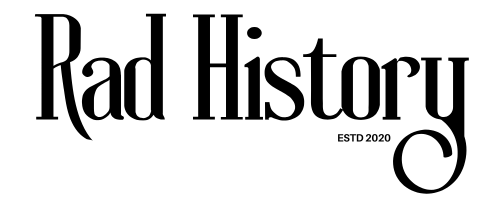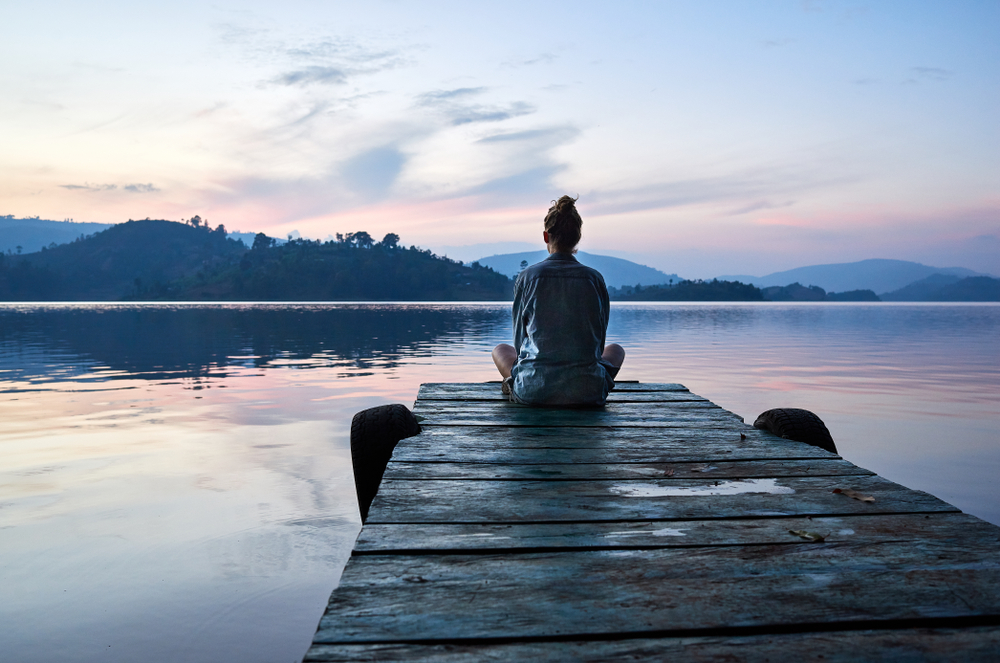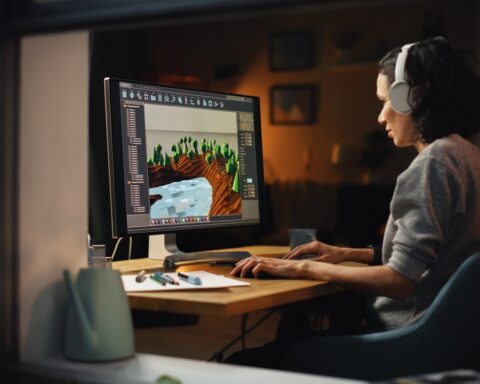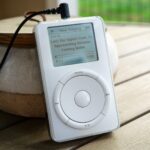These days, self-care can mean anything from sipping turmeric lattes to deleting Slack off your phone and pretending your boss doesn’t exist. It’s a term that’s been hashtagged into oblivion, and attached to everything from skincare routines to spiritual retreats. It’s become a little hard to tell where the wellness ends and the branding begins.
But the urge to take care of ourselves isn’t new. Long before jade rollers and journaling prompts, humans were soaking in mineral baths, balancing bodily humors and prescribing themselves rest from the madness of life. The concept of self-care has evolved through empires, religions, revolutions and the rise of capitalism. And like any good survival strategy, it’s been reshaped by the culture, power structures, and stressors of the time.
Ancient Origins: When Cleanliness Was Next to Godliness (and Status)
Long before the phrase “treat yo’ self” entered the lexicon, the ancient world had already figured out that taking care of the body could also soothe the mind – and, if done right, boost your social standing.
The Roman Bathhouse
Roman bathhouses we’re not just glorified spas. They were the original wellness complete with steam rooms (caldariums), cold plunges (frigidariums), libraries, massage areas, and gossip circles. For the Romans, bathing was about more than hygiene. It was an important part of their ritual, relaxation, and reputation. Wealthy citizens would spend hours cycling through hot and cold rooms, oiled up and exfoliated by slaves (an important reminder: Roman luxury rested on the back of systemic inequality). Still, for its time, the bathhouse was surprisingly democratic, rich and poor alike could access public baths, although not quite on equal terms.
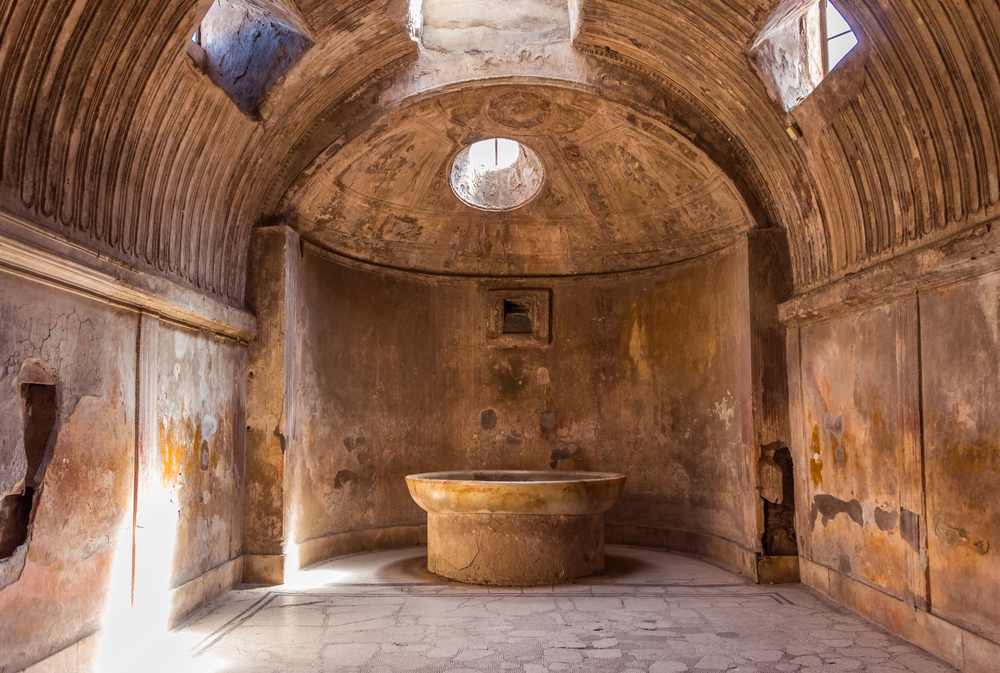
The Original Gym Bros
Over in ancient Greece, the idea of self-care was bound to the gymnasium. But this wasn’t just about biceps and brawn. Gymnasiums were places of both physical and intellectual conditioning, where exercise was paired with philosophy, and caring for the body was considered a path to cultivating the mind. Socrates, who wasn’t exactly bench-pressing in his toga, still spoke about caring for the soul as a moral responsibility.
Traditional Chinese Medicine
Traditional Chinese Medicine encompasses multiple approaches to self-care, from acupuncture to herbalism and Tai Chi. These approaches saw health as a state of balance between the body’s Qi (vital energy) and external environments. Acupuncture and massage were used to relieve pain or stress and improve overall health, herbs helped to restore mental equilibrium, and Tai Chi combined physical movement with deep breathing and meditation.
Ayurveda and Meditation
The ancient Indian practice of Ayurveda is one of the oldest holistic healing systems in the world. It’s focus is to balance the body, mind and spirit through a mix of diet, herbs and lifestyle practices like oil massage and detoxification therapies. Another key part of ancient Indian self-care was meditation, a lifelong, daily ritual to nurture inner peace and enhance emotional wellbeing.
Key Shift
In the ancient world, self-care wasn’t seen as frivolous or indulgent. It was a practice rooted in community, cosmology, and identity. Sure, it was tangled up in status, access, and inequality (some things never change), but the foundation was clear: to care for yourself was to participate in a larger system of society, of health, and of life well-lived.
Medieval Morality and the (Brief) Decline of the Body
Skipping the Bath and Embracing the Suffering
If the Romans believed in the power of a good soak, the medieval church was decidedly… less enthusiastic. Somewhere between the collapse of the Western Roman Empire and the rise of the Gregorian chants, the vibe around self-care took a bit of a nosedive, especially when it came to the body.
In early Christian Europe, physical indulgence was seen as suspect. The flesh, after all, was the gateway to sin, and anything that felt too good was probably leading you straight to hell. Cleanliness, once next to godliness, started taking a backseat to spiritual purity. Bathing declined not just because of infrastructure collapse or plague paranoia (though those didn’t help), but because scrubbing yourself too often was considered vain, indulgent, and even dangerous to the soul.
Instead, asceticism became the self-care of choice. Think hair shirts, fasting, and sleeping on cold stone floors. Saints were praised for their suffering. St. Simeon Stylites famously lived on top of a pillar in the desert for 37 years. Not exactly a mindfulness retreat, but hey, it had a view.
The Monastic View
That said, the picture isn’t all gloom and flagellation. Monastic communities, especially Benedictine ones, introduced structured daily routines that included time for rest, prayer, physical work, and contemplation. The Rule of St. Benedict wasn’t exactly a spa menu, but it did offer a balanced, rhythmic life rooted in moderation and discipline. In a way, it was a form of medieval wellness where routine meant resilience, and devotion was detoxifying.

Even as the broader culture feared bodily pleasures, monks were quietly preserving ideas of balance and order. They kept herbal medicine alive, maintained early hospitals, and recorded ancient wellness texts. Ironically, while the outside world feared the body, the monastic world quietly nurtured it with humility, intention, and a lot of cabbage-based remedies.
Key Shift
Self-care in the medieval era became moralized and internalized. Where Romans had celebrated pleasure and public rituals, medieval Europeans learned to associate wellness with restraint, denial, and spiritual duty. The body wasn’t to be cared for, it was to be conquered.
Enlightenment and Industrialization: The Rise of Routine and the Sanitized Self.
After a few centuries of fearing pleasure and dodging baths, Europe woke up to a radical idea: maybe the body wasn’t just a fleshy trap for the soul. Maybe it was worth caring for – not just to honor God, but to preserve life, promote reason, and avoid dying of things that, frankly, smelled preventable.
Enlightenment Thinking
Welcome to the Enlightenment, where science got louder, soap got cheaper, and society started making some very strong links between hygiene, morality, and control.
This era saw the rise of public health as a concept, especially in response to outbreaks of disease in overcrowded cities. Sanitation campaigns like early sewage systems, fresh water access, and compulsory hand washing, weren’t just about keeping people alive. They were also about reinforcing social order. The clean, orderly citizen was the good citizen. Dirt, disorder, and disease? Signs of laziness or moral decay. (See also: the long history of weaponizing hygiene as a classist tool.)
| Category | Self-Care Idea | Why It Matters |
|---|---|---|
| Physical | Take a 30-minute walk outdoors | Boosts cardiovascular health and reduces stress through nature exposure |
| Physical | Prepare a nourishing, home-cooked meal | Encourages mindful eating and healthier nutrition |
| Mental | Try a digital detox for an evening | Reduces overstimulation and gives your brain space to reset |
| Mental | Journal your thoughts for 10 minutes | Helps declutter your mind and process emotions |
| Emotional | Watch a feel-good movie or show | Provides an emotional release and encourages joy |
| Emotional | Practice self-compassion affirmations | Replaces self-criticism with self-kindness |
| Spiritual | Meditate for 10 minutes in silence | Strengthens inner calm and present-moment awareness |
| Spiritual | Light a candle and reflect on your day | Encourages ritual and meaning-making in everyday life |
| Social | Call a friend or loved one | Reinforces connection and combats loneliness |
| Social | Say no to something you don’t have energy for | Sets boundaries and prioritizes your well-being |
| Creative | Draw, paint, or craft something | Stimulates creative thinking and relieves stress |
| Creative | Build a playlist that makes you feel good | Taps into music as a tool for mood regulation |
| Financial | Review your budget and treat yourself within limits | Supports financial health while acknowledging your effort |
| Environmental | Declutter a single drawer or surface | Small wins in organization can reduce background stress |
| Restorative | Take a nap or rest without guilt | Sleep and rest are non-negotiable parts of physical and mental recovery |
Victorian Britain
During this time the body became a battleground of virtue. Bathing was back but now with a heavy dose of guilt and propriety. Middle-class households embraced “domestic hygiene” as both a health measure and a sign of moral refinement. Women were expected to keep themselves and their homes spotless, calm, and under control, preferably while looking radiant and never complaining. It was self-care, sure, but through the lens of duty, not desire.
At the same time, early psychologists and physicians began dabbling in what we’d now call preventative care. The idea that habits, like sleep, diet, fresh air and exercise, could shape not just your health – but your character, gained traction. Self-care started to mean discipline: rising early, eating bland food, walking briskly through the park in stiff trousers. More “train yourself” than “treat yourself”.
Industrial Revolution
Then came the Industrial Revolution, and with it, the ultimate paradox: as machines made life more efficient, human life became less humane. Factory work demanded long hours, repetitive labor, and a near-total disregard for mental or physical wellbeing. In this context, self-care took on a new edge, less about self-improvement, and more about basic survival.
Workers began pushing back. Labor movements fought for rest days, shorter hours, and safe conditions, these were hard-won rights that form the basis of modern wellness, even if we forget it. Rest became political and recreation became necessary.
Key Shift
In the enlightenment and Industrial era, self-care was reframed as personal responsibility. It moved out of the monastery and into the home, becoming tied to productivity, morality, and social status. Cleanliness became a sign of character. Rest became something you earned. And the modern obsession with “doing things right” quietly took root.
20th Century: Freud, Fitness, and the Fight for the Self
Early Psychology
If the 19th century was all about scrubbing your hands, the 20th was about getting inside your head. Enter: Sigmund Freud, the man who gave introspection and unresolved mother issues the names they have today. Freud and his psychoanalytic peers cracked open the door to modern mental health by suggesting that maybe our thoughts, feelings, and unconscious desires deserved attention. This wasn’t self-care as we know it, but it was a seismic shift: caring for the mind became part of the wellness equation. Emotional hygiene started its long, complicated journey into mainstream consciousness.

Post-War Prosperity
Meanwhile, in a post-war America and Europe, self-care took a distinctly shinier turn. The economy was booming, suburbia was sprawling, and the wellness industry was quietly being born in the form of beauty salons, diet trends, and home workout routines. For the first time, leisure wasn’t just for the elite. The working and middle classes had TVs, lawn chairs, and (some) spare time.
But beneath the polished surface of Tupperware parties and jazzercise classes, the real evolution of self-care was happening in the margins. People for whom survival wasn’t a luxury lifestyle, but a political act.
Civil Rights and Feminist Movements
In the 1960s and ‘70s, during the rise of the Civil Rights Movement, second-wave feminism, and LGBTQ+ activism, self-care was reframed not as indulgence, but as resistance. For Black activists, women and queer communities (who were often excluded from mainstream healthcare, overpoliced, or outright targeted) caring for one’s mental and physical wellbeing became a radical statement. Audre Lorde, in particular, captured this spirit when she wrote, “Caring for myself is not self-indulgence, it is self-preservation, and that is an act of political warfare.”
In this era, self-care was collective, defiant, and deeply rooted in community. Think women’s health clinics run by women, peer-led mental health support, and mutual aid networks designed to give care where the system failed. It was DIY wellness with a backbone.
The ‘80s and ‘90s Wellness Boom
By the 1980s and 90s, self-care had started to morph again, this time into something sleeker, sweatier, and a little bit manic. Think aerobics tapes, low-fat everything, self-help bestsellers, and corporate wellness programs that offered lunchtime yoga while ignoring the 60-hour workweeks. The mantra of the era was “work hard, play hard” but increasingly, it felt like you had to work on yourself even harder just to keep up.
This was peak self-optimization. Wellness became a project, and you were the product. You could “be your best self” as long as you bought the right books, followed the right routines, and ran the right number of miles before breakfast. Therapy was in, but so was toxic positivity. Emotional resilience got rebranded as “toughing it out.”
Key Shift
In the 20th century, self-care was pulled in two directions – radical and restorative in activist circles, vs. aspirational and exhausting in mainstream culture. The personal became political, but it also became profitable. The seeds were planted for today’s $13-billion wellness industry, and for a generation teetering on the edge of burnout.
21st Century Self-Care: Hashtag Healing or Wellness Washing?
If the 20th century flirted with the idea of self-care as self-improvement, the 21st went full throttle. Suddenly, self-care wasn’t just something you did, it was something you branded, tracked and shared. And nothing says personal growth like a pastel infographic reminding you to “hydrate and set boundaries”
Instagram, Influencers and the Commodification of Care
Welcome to the age of #selfcare, where the concept exploded across Instagram, wellness blogs and the backs of oat milk cartons. At its best, this era brought long-overdue attention to mental health, rest, trauma, and boundaries. At its worst, it turned self-care into a competitive sport, looking suspiciously like a shopping spree in active-wear.
Let’s start with the upside. The early 2000s and 2010s saw a massive cultural shift toward destigmatizing mental health. Therapy went mainstream (finally), mindfulness apps like Headspace and Calm took off, and millennials led a quiet revolution by talking openly about anxiety, depression, and burnout. This wasn’t just performative, it was a real pushback against the “grind culture” of the previous decades.

The Burnout Epidemic
Somewhere between the rise of smartphones, remote work, and the gig economy, people started to realize that always being “on” was slowly killing them. Burnout went from a whispered HR concern to a Buzzfeed headline to a WHO-recognized condition. Suddenly self-care wasn’t indulgent, it was essential. But of course, where there is vulnerability, there is opportunity. And the wellness industry was ready to pounce.
Cue the commodification of care: luxury candles, chakra-aligning supplements and 12-step skin-care routines. Brands capitalized on the self-care aesthetic: muted tones, minimalist packaging, and a promise that buying their product was basically therapy in a box. Even tech got in on it. There’s now a wearable to monitor your stress levels, an app for breathing and a subscription box for your feelings. And while some of this is genuinely helpful, a lot of it is the same old capitalism with better branding.
Because let’s be honest, a $120 gua sha won’t fix systemic overwork, unequal healthcare access, or a toxic workplace.
Pandemic Pivot
Then came COVID-19, and the self-care narrative pivoted once again. Suddenly, it wasn’t about glowing skin or productivity hacks, it was about staying alive. For many, the pandemic reframed self-care as something much more basic: getting enough sleep, staying connected, protecting your mental health, and letting go of the relentless pace. In a world that was literally falling apart, rest became radical again. Not unlike the activist-led model of the ‘60s and ‘70s.
But even post-pandemic, we’re still left with a paradox: We’re more aware than ever of the need for self-care, yet also more exhausted, overwhelmed, and marketed to than any generation before. We’re encouraged to rest, but also to track our sleep, optimize our workouts, and monetize our hobbies “for passive income.” It’s enough to make anyone need a nap.
Key shift
In the 21st century, self-care is everywhere which is both the power and the problem. It’s democratized and digitized, commodified and essential. At its core, it’s still about caring for the self. But defining who that self is (and what they really need) has never been more complicated.
If there’s one thing history shows us, it’s that self-care is never just about the self. Whether it’s Roman baths or rage-quitting your job for mental health reasons, every era has defined care in the context of its values, its pressures, and its power structures. And today? We’re living in the tension between two extremes: the radical roots of self-care as resistance… and the seductive pull of self-care as lifestyle branding.
So where does that leave us?
Maybe it’s time to return to something simpler. To strip away the noise, the marketing, and the 14-step morning routines. Maybe self-care isn’t about doing more, but about remembering what actually matters. That could mean unplugging from hustle culture. Saying no when you mean it. Caring for your body not because it’s a “temple”, but because it carries you through the day. Listening, truly listening, to you own exhaustion before a product tries to fix it.

It could also mean acknowledging that self-care isn’t always fun. Sometimes its setting boundaries that might upset people. Going to therapy, getting off social media, taking your meds. Sometimes self-care is community care – checking in on a friend, organizing for better working conditions, or asking for help. It’s not always aesthetic, but it is always necessary.
Because in the end, real self-care isn’t about escape. It’s about returning to your body, needs, and the life you actually want to be living. The kind of care that doesn’t start with a swipe or end with a purchase. The kind that lasts longer than a face mask.
So whether you find that care in a forest, a group chat, or a very ordinary Tuesday night dinner – guard it. Because, in a world that profits off your stress, stillness is an act of rebellion.
